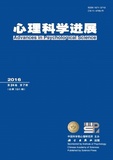The inquiry of the trickle-down effect is booming and developing into a new realm in the leadership study. Trickle-down effect refers to a top-down process in which leaders’ trait, cognition, affect, attitude and behavior induce the similar responses of followers and/or groups. Based on 62 independent empirical investigations reported in 50 articles, we found: (1) Trickle-down effect can be classified into six types according to the nature (state-like, affects, cognitions, attitudes, behaviors, relationships) of the transmitted variables; (2)Trickle-down effect can further influence the attitudes, behaviors and performance of followers, teams and other stakeholders; (3)There are mainly five theories explaining the occurrence of trickle-down effect, namely emotion contagion/affective event theory, social learning theory, social exchange theory, social identity theory and social information processing theory; (4) The strength of trickle-down effect depends on some specific leader, follower/team, and contextual attributes.




